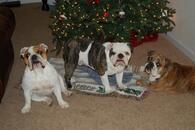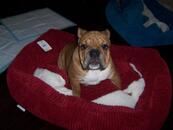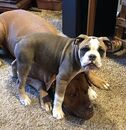Shahster
New member
- Apr 13, 2013
- 224
- 1
- Country
- Canada
- Bulldog(s) Names
- Otis & Cyrus
- Thread Starter
- Thread starter
- #16
Yep - that would be one of the buggers... Epsom salts bath will help with the swelling and relief some of the pressure. As Sandy said - they are a bacteria build up so in a sense they are a huge ugly monster zit! Also, as Sandy suggested... stick with no treats outside of his meal food (give pieces of that as a treat) until you find the sorce of the allergy. I knew a Cane Corso that was allergic to carrots and a Pitbull that was allergic to apples... so it really can be anything.
How old is Otis?
He's 4 right now. I just got him in February. The first time he got a cyst he was on Royal Canin, and eating greenies (shame on me). Now he's on Fromm pork and peas, and I only gave him fruit/veggies so he can lose weight, according to the vet he should weigh 60 pounds. So for dinner he'll have ground beef and macaroni, I'm sure he won't miss his apples too much. How much of the bland diet should I give him a day? And I'm assuming I keep feeding it to him until the cyst is gone? THANK YOU SO MUCH!







